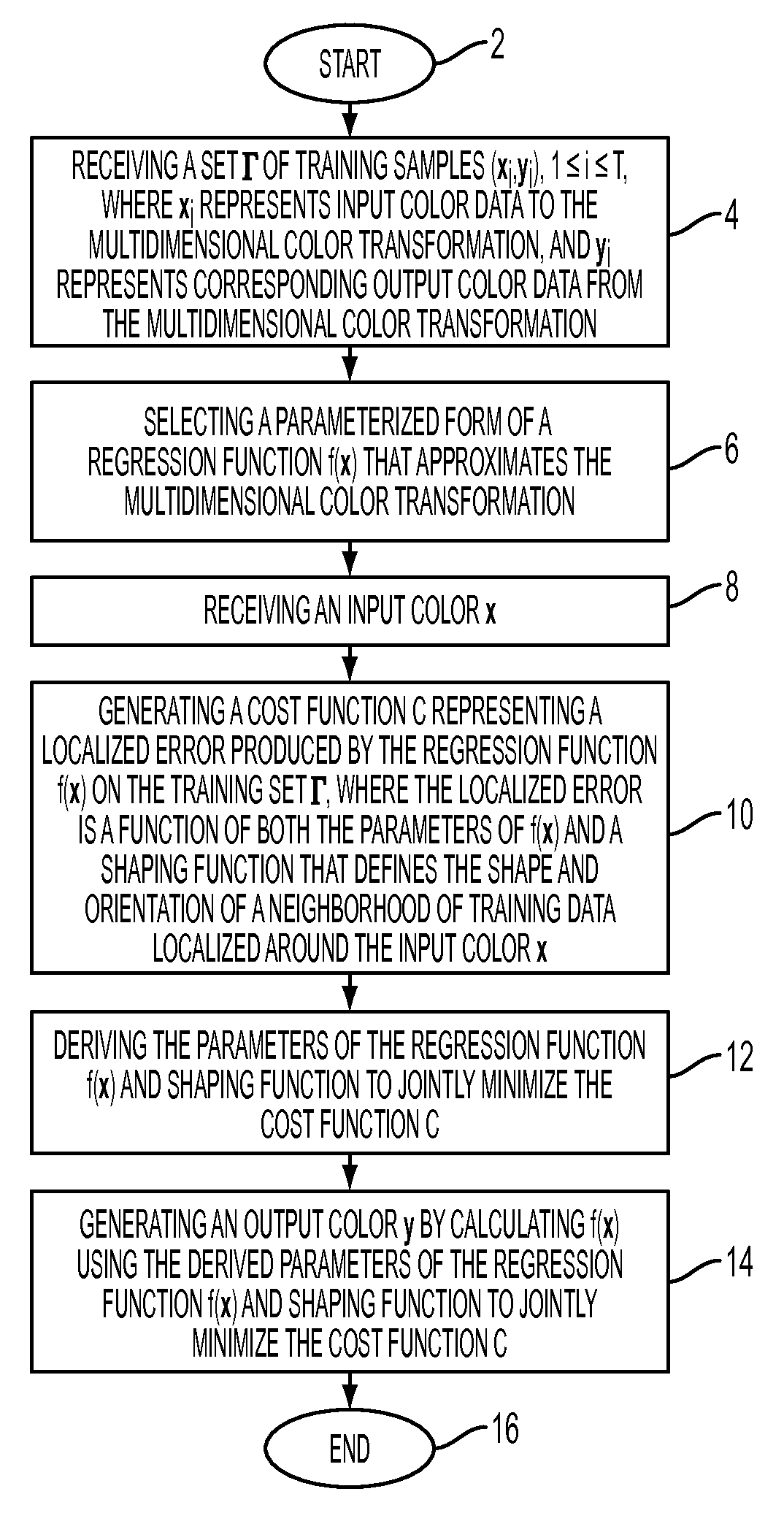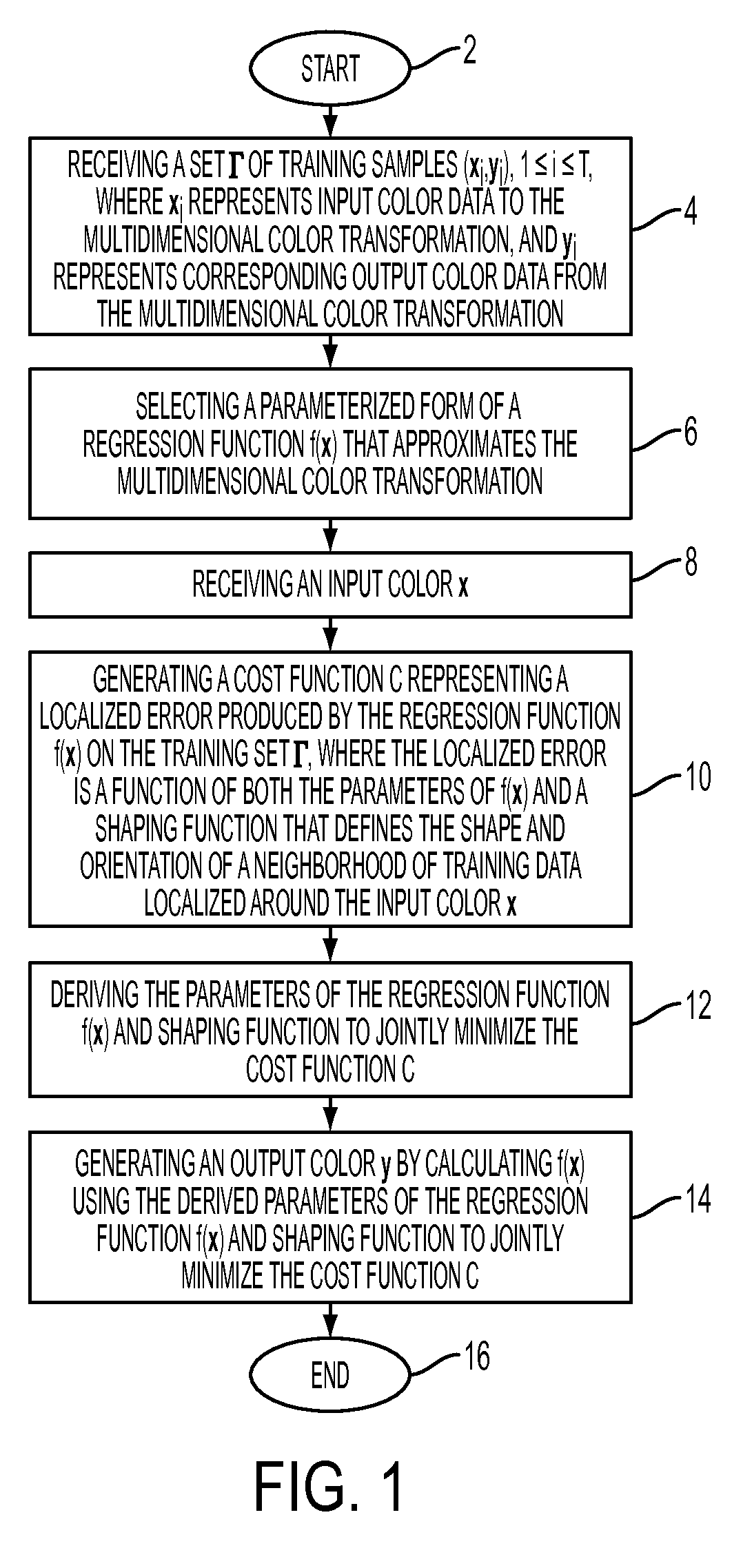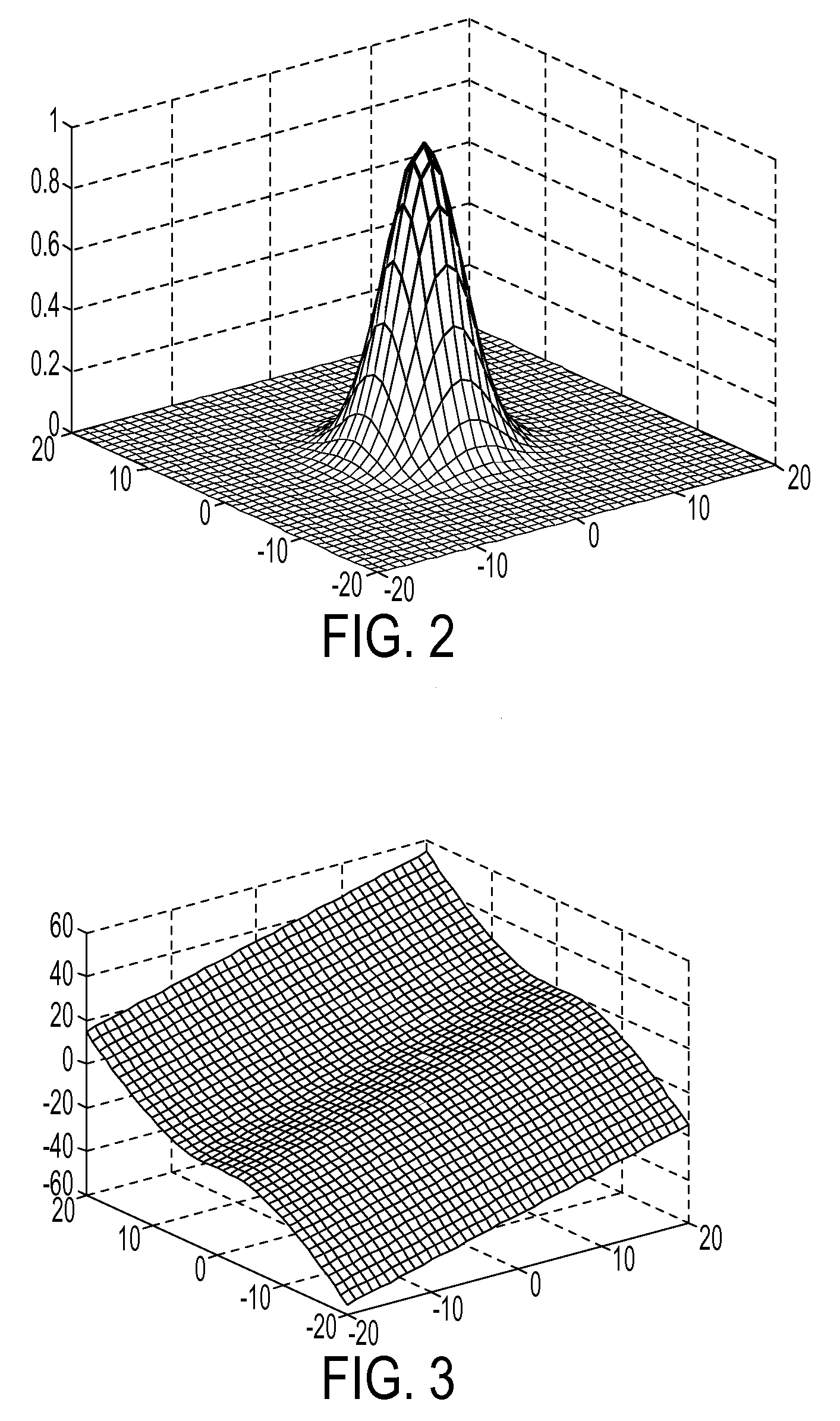Local regression methods and systems for image processing systems
a local regression and image processing technology, applied in the field of local regression methods and systems for image processing systems, can solve problems such as large regression errors, and achieve the effect of minimizing the cost function
- Summary
- Abstract
- Description
- Claims
- Application Information
AI Technical Summary
Benefits of technology
Problems solved by technology
Method used
Image
Examples
Embodiment Construction
[0018]This disclosure provides methods and systems for local regression in deriving color transformations by introducing the notion of “shaping” in the localizing weight function. The disclosed exemplary embodiments include: 1.) a parameterization of the weight function typically used in local regression problems via a shaping matrix, and 2.) a method to obtain the “optimal” shaping matrix by explicitly introducing the weight function parameters in the regression error measure. Demonstrated experimentally are that significant gains can be made by optimizing “the shaping matrix” in local regression problems. Many color imaging applications including printer and scanner characterization can benefit from the disclosed methods, apparatus and systems. The disclosed exemplary embodiments are particularly advantageous for color devices that employ a large number of color channels, thus inducing a large dimensionality in the characterization data.
[0019]In addition, this disclosure provides ...
PUM
 Login to View More
Login to View More Abstract
Description
Claims
Application Information
 Login to View More
Login to View More - R&D
- Intellectual Property
- Life Sciences
- Materials
- Tech Scout
- Unparalleled Data Quality
- Higher Quality Content
- 60% Fewer Hallucinations
Browse by: Latest US Patents, China's latest patents, Technical Efficacy Thesaurus, Application Domain, Technology Topic, Popular Technical Reports.
© 2025 PatSnap. All rights reserved.Legal|Privacy policy|Modern Slavery Act Transparency Statement|Sitemap|About US| Contact US: help@patsnap.com



